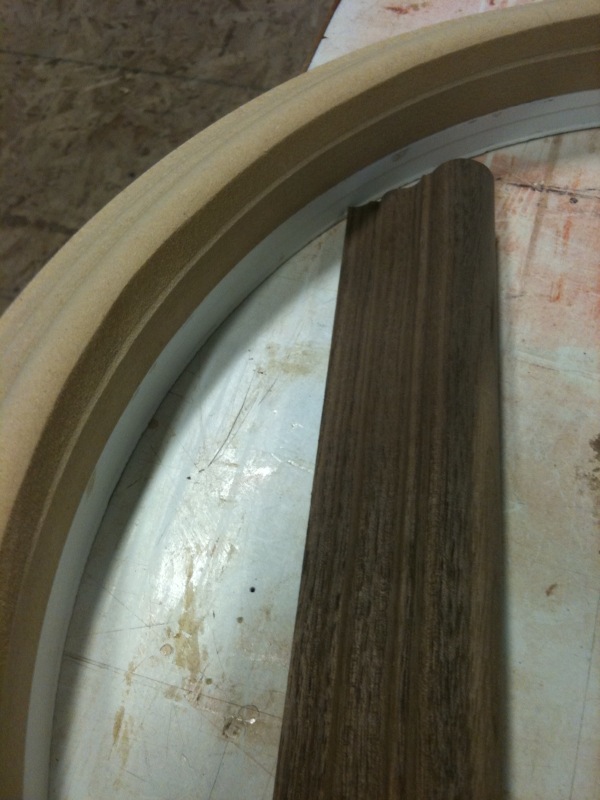Oversize Wood Gate Structure
Ideas for how to build an 8-foot-wide, 3-foot-high wooden gate so that it won't sag. March 5, 2008
Question
I have a drawing of an exterior gate 16' wide with 2 sections, 8' x 36", on two hinges each and no gate wheels for support. The gate face will have T&G, etc (some weight). My problem is the stile (hinge sides) is only 4" wide and I don't think it will support the weight of the 8' span. My thoughts are to use 1.75" hardwood stile/rails, making the T&G and interior rails out of pine (less weight). Will 4" stile support hinges and gate weight? What type of wood should I use? Paint grade exterior finish.
Forum Responses
(Architectural Woodworking Forum)
From contributor G:
I would go with 2.25 thick stiles, rails, .75 thick panels, 1.75 thick jamb. 4.5 x 4.5 hinges. Spanish cedar, mahogany, perrota or teak.
From contributor J:
I share your skepticism. I can't imagine what sort of joinery could prevent the hinge-side corners from quickly loosening or breaking. The weight of the gate itself is only half the problem; what happens when some teenager gets in the habit of standing on it and riding it through its arc? I'd look for significant design changes, or offer no guarantee whatsoever.
From the original questioner:
I agree with both. Another brilliant designer with no clue. I would want a 6" stile at least and a gate wheel. I'll see what they come back with.
From contributor D:
4x3 stiles or larger, with long tenons, through pegged. This type of gate is like a portable timber frame. You have to think of withdrawal (tension) and compression. Triangulate if you can, where you can. Think about a copper or lead cap. Think about flat surfaces and draining water - T&G in a plow on the lower rail will collect water, eh? You even need to think about wind load - "solid" panels will be more like a sail - better to go with slats to let air pass through.
1-3/4 or even 2-1/4 is too thin. Think of standing a piece of notebook paper on edge and staying erect. I advise staying far away from hinging - an experienced metal fabricator should be on call for all that.
Turn your professional presence to the job, educate and suggest things for strength and longevity. If they don't want you involved, beware. Many of these requests are folks reeling from steel gate pricing and looking for a cheaper way to keep the Huns at bay and still project an image of wealth.
From contributor T:
I think contributor D and the other responders are right on. Without wheels, it's going to sag. I would tell your customer to expect it to sag. You might suggest large strap hinges that can be through-bolted to the stile and rail, thereby holding that joint relatively tight and square. My concern is the unsupported meeting stiles. Gravity and exposure to the elements are going to win. If your customer has seen one like it, have them show it to you. Otherwise, have them sign off on a gate with no warranty.
From contributor M:
Build it out of steel, then paint it to look like wood. There are reasons that wooden gates like the one proposed here don't exist. If they were built, they failed. Or someone was able to modify the design to include wheels or metal triangulation.
From contributor I:
After you've glued and screwed it, the 8' wood gate is still going to sag. I install a turnbuckle wire or rod support (like a garage door) on the inside of the gate, running diagonally from the top hinge down to the lower corner. This can be adjusted as needed over the years to keep it up. Even a welded iron gate can end up racked out of square after a while. Also, design the gate so that the kids can't easily stand or swing on it (because they will).
From contributor D:
If you build it correctly, it will not sag. Every joint counts towards the whole. You don't need a wheel or turnbuckle. Good wood, real joinery, awareness of compression and tension, craft are all necessary, though. People make these all the time, but it is very different from most woodwork since performance is paramount. Unlike cabinets screwed to walls, a gate's design is driven by its function, and is not merely decorative. Work with the designer, suggest triangulated designs - those that will enhance the gate's ability to last.
Wheels only work if the entire area of travel is dead level, and look as if you have no confidence or no business making gates - which you don't if you see a wheel as the solution to the problem. Turnbuckles ruin the look, and as woodworkers, we are engaged to find wooden solutions. Think of a diagonal timber, joined properly, replacing any turnbuckle, as a better design, more appropriate to the material at hand. There are very real design considerations as stated in my earlier post. Ignore them at your own peril.
From contributor I:
Another thought... Large swinging, wood coral gates are often hinged from tall king posts that have a guy wire running from the top of the post, down to the end of the gate.
From contributor R:
Or maybe a welded steel frame clad in wood?
